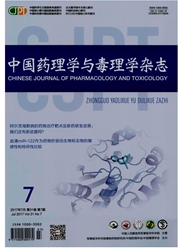

 中文摘要:
中文摘要:
芋螺毒素由芋螺毒液管和毒囊内壁的毒腺所分泌,多数由12~40个氨基酸组成,富含二硫键。其多变的一级序列、特异二硫键配对方式和特殊修饰氨基酸与陆生动物分泌的多肽或蛋白质显著不同,作用靶点涵盖钠、钾和钙离子通道等及多种膜受体。根据芋螺毒素保守的信号肽序列及半胱氨酸框架,芋螺毒素分为A,M,O,P,S,T,I,V,Y,J,D,C和L等20多个超家族,根据药理学作用靶点,其进一步可分为α、μ、ω、κ、δ、ψ、σ、ρ、γ、加压素、惊厥剂和睡眠肽等药理家族。本文着重介绍了芋螺毒素的分类与多样性,简要总结了作用于烟碱型乙酰胆碱受体、钙、钠离子通道和N-甲基-D-天冬氨酸受体的几类芋螺毒素的毒理学和药理学研究进展。这些毒素有的毒性很高,有的已发展为药物或正在开发中,一些毒素已成为神经药理学的强大研究工具。期望该综述对从事毒素或相关神经生物学的研究者有所裨益。
 英文摘要:
英文摘要:
Conotoxins are secreted by Conus snail,which are mainly composed of 12-40 amino acid residues and several disulfide bridges. Their diversities in sequences,disulfide bond connections and modified amino acids are different from those of peptide toxins and proteins secreted by terrestrial animals,and their targets include sodium,potassium,calcium ion channels and membrane receptors. Conotoxins have been categorized into more than 20 superfamilies,such as A,M,O,P,S,T,I,V,Y,J,D,C and L,which are characterized by consensus signal sequences and cysteine framework. According to pharmacological functions,these superfamilies are further classified into several pharmacological families,such as α,μ,ω,κ,δ,ψ,σ,ρ,γ,conopressin and conantokins. This review briefly introduced the classifications and diversities of conotoxins,and summarized the progresses in the toxicology and pharmacology of conotoxins targeting calcium,sodium ion channel,nicotinic acetylcholine receptor and N-methyl-D-aspartic acid receptor. Some of the above conotoxins are highly poisonous,some have been developed as drugs or drug candidates,or have become powerful research tools for neuropharmacology. We hope this review will contribute to researches of toxins and related neuropharmacology.
 同期刊论文项目
同期刊论文项目
 同项目期刊论文
同项目期刊论文
 Characterization of a T-superfamily conotoxin TxVC from Conus textile that selectively targets neuro
Characterization of a T-superfamily conotoxin TxVC from Conus textile that selectively targets neuro 期刊信息
期刊信息
